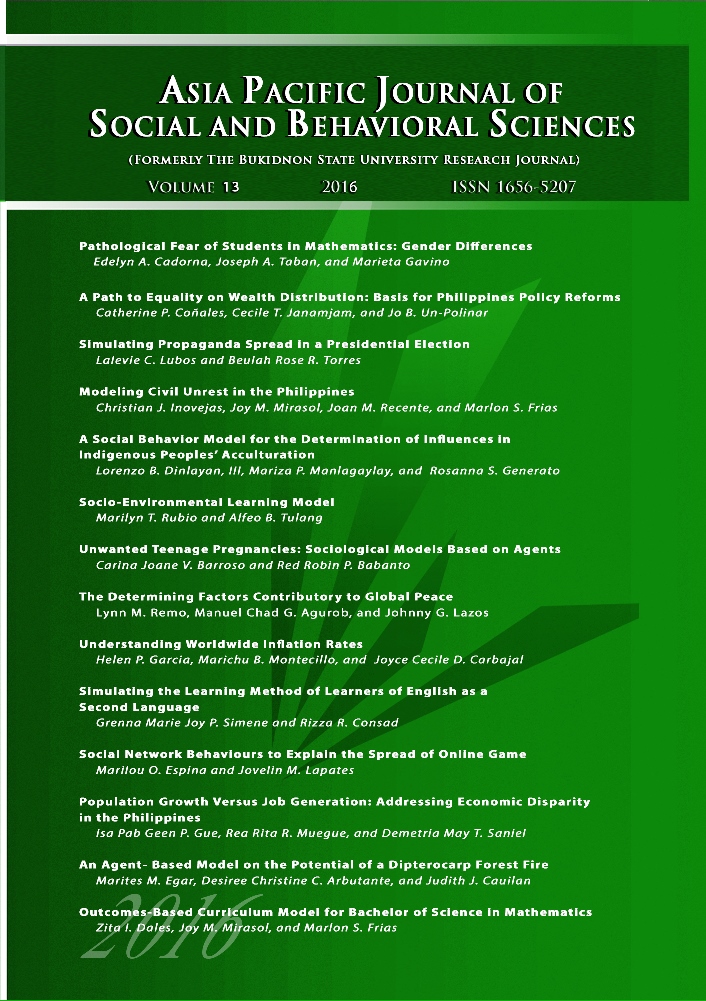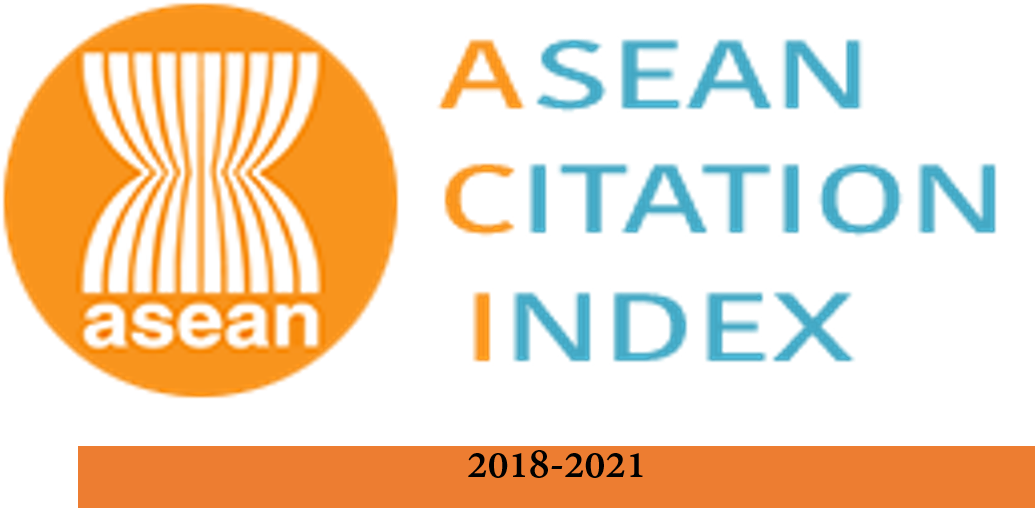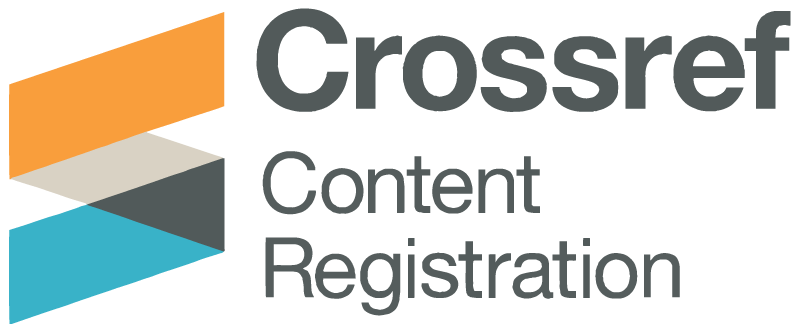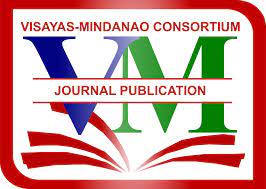Outcomes-Based Curriculum Model for Bachelor of Science in Mathematics
Abstract
This study analyzed the existing Bachelor of Science in Mathematics Curriculum of the Bukidnon State University. The analysis started with the review followed by the proposed revision considering the internal and external factors. Internal factors included the level of difficulty, teachers, and facilities. The external factors considered the employability of the graduates, salary, and upward mobility in the position. It formulated three possible curricula with ascending variations from the existing one. Using the Total Probability Theorem (TPT), it came up with a model considered to be the most feasible curriculum of Bachelor of Science in Mathematics. Developing a Curriculum (DACUM) and Outcomes- Based Education framework were used to revise the existing curriculum.
Keywords:
Outcomes-based, curriculum model, BS Mathematics Curriculum, DACUM, graduates
References
Balmaceda, J.M.P. (2015). Updates from the CHED: The New BS Math and BS Applied Math Programs. Presented during the Annual MSP conference on May 2015.
Boholano, H.B. (2012). Employability of teacher education graduates of an Asian Public University. Retrieved from http//dx.doi.org/10.77.9
Bruwer, J. (1998). First destination graduate employment as key performance indicator: Outcomes assessment perspectives. Unit for Institutional Planning and Research, Cape Technikon, South Africa, bruwerj@hyper.ctech.ac.za.
Hick, S. (2003). Factors influencing unemployment. Carleton University. Retrieved from http://www.son.rochester.edu/prospective-students/why-pursue-advanced-degree.html
Hochstein, J.I., & Hockstein, D. (2000). DACUM, a tool for documenting industrial involvement in curriculum design. Paper presented at 2000 Annual Conference, St. Louis, Missuori.
Kinash, S. (2015). 8 ways to enhance your students’ graduate employability. Issue 2. Bond University. Retrieved from http://www.employability.org
Kong, J. (2011). Factors affecting employment, unemployment, and graduate study for university graduates in Beijing.
Laraya, J. (2009). The employability of graduates: A determinant to full employment. Enhancement of Graduate Employment. Conference Proceedings organized by the Association of Southeast Asian Institutions of Higher Learning (ASAIHL). Colombo, Sri Lanka.
Morganson, V.J., Major, D.A., & Bauer, K.N. (2009). Work-life job analysis: Applying a classic tool to address contemporary issues. The Psychologist Manager Journal, 12, 252-274. Doi 10.1080/108871550903316305
Padua, R.N. (2012). The DACUM Process Series 1. A seminar workshop given to the selected Bukidnon State University faculty in preparation for the Outcomes-Based Education Curriculum.
Pavlin, S. (2013). Employability of higher education graduates: Findings and policy implications from the selected EU projects. A paper presented during the EU Higher Conference, Kuala Lumpur Convention Center, December 16, 2013.
Peacock, L. (2007). Economic, employment, educational, and environmental factors cause seven-year gap on life expectancy of men in London.
Psacharopoutos, G., & Schotter, M. (2004).Skills for employability, economic growth to innovation: Monitoring the relevance of education and training systems. European Expert Network on Economics of Education (EENEE). Retrieved from http://www.eenee.de/docs/employability
Yorke, M., & Knight, P. (2003). Assessment learning to employability. Glasgow. Society for Research into Higher Education and Open University.
Boholano, H.B. (2012). Employability of teacher education graduates of an Asian Public University. Retrieved from http//dx.doi.org/10.77.9
Bruwer, J. (1998). First destination graduate employment as key performance indicator: Outcomes assessment perspectives. Unit for Institutional Planning and Research, Cape Technikon, South Africa, bruwerj@hyper.ctech.ac.za.
Hick, S. (2003). Factors influencing unemployment. Carleton University. Retrieved from http://www.son.rochester.edu/prospective-students/why-pursue-advanced-degree.html
Hochstein, J.I., & Hockstein, D. (2000). DACUM, a tool for documenting industrial involvement in curriculum design. Paper presented at 2000 Annual Conference, St. Louis, Missuori.
Kinash, S. (2015). 8 ways to enhance your students’ graduate employability. Issue 2. Bond University. Retrieved from http://www.employability.org
Kong, J. (2011). Factors affecting employment, unemployment, and graduate study for university graduates in Beijing.
Laraya, J. (2009). The employability of graduates: A determinant to full employment. Enhancement of Graduate Employment. Conference Proceedings organized by the Association of Southeast Asian Institutions of Higher Learning (ASAIHL). Colombo, Sri Lanka.
Morganson, V.J., Major, D.A., & Bauer, K.N. (2009). Work-life job analysis: Applying a classic tool to address contemporary issues. The Psychologist Manager Journal, 12, 252-274. Doi 10.1080/108871550903316305
Padua, R.N. (2012). The DACUM Process Series 1. A seminar workshop given to the selected Bukidnon State University faculty in preparation for the Outcomes-Based Education Curriculum.
Pavlin, S. (2013). Employability of higher education graduates: Findings and policy implications from the selected EU projects. A paper presented during the EU Higher Conference, Kuala Lumpur Convention Center, December 16, 2013.
Peacock, L. (2007). Economic, employment, educational, and environmental factors cause seven-year gap on life expectancy of men in London.
Psacharopoutos, G., & Schotter, M. (2004).Skills for employability, economic growth to innovation: Monitoring the relevance of education and training systems. European Expert Network on Economics of Education (EENEE). Retrieved from http://www.eenee.de/docs/employability
Yorke, M., & Knight, P. (2003). Assessment learning to employability. Glasgow. Society for Research into Higher Education and Open University.










